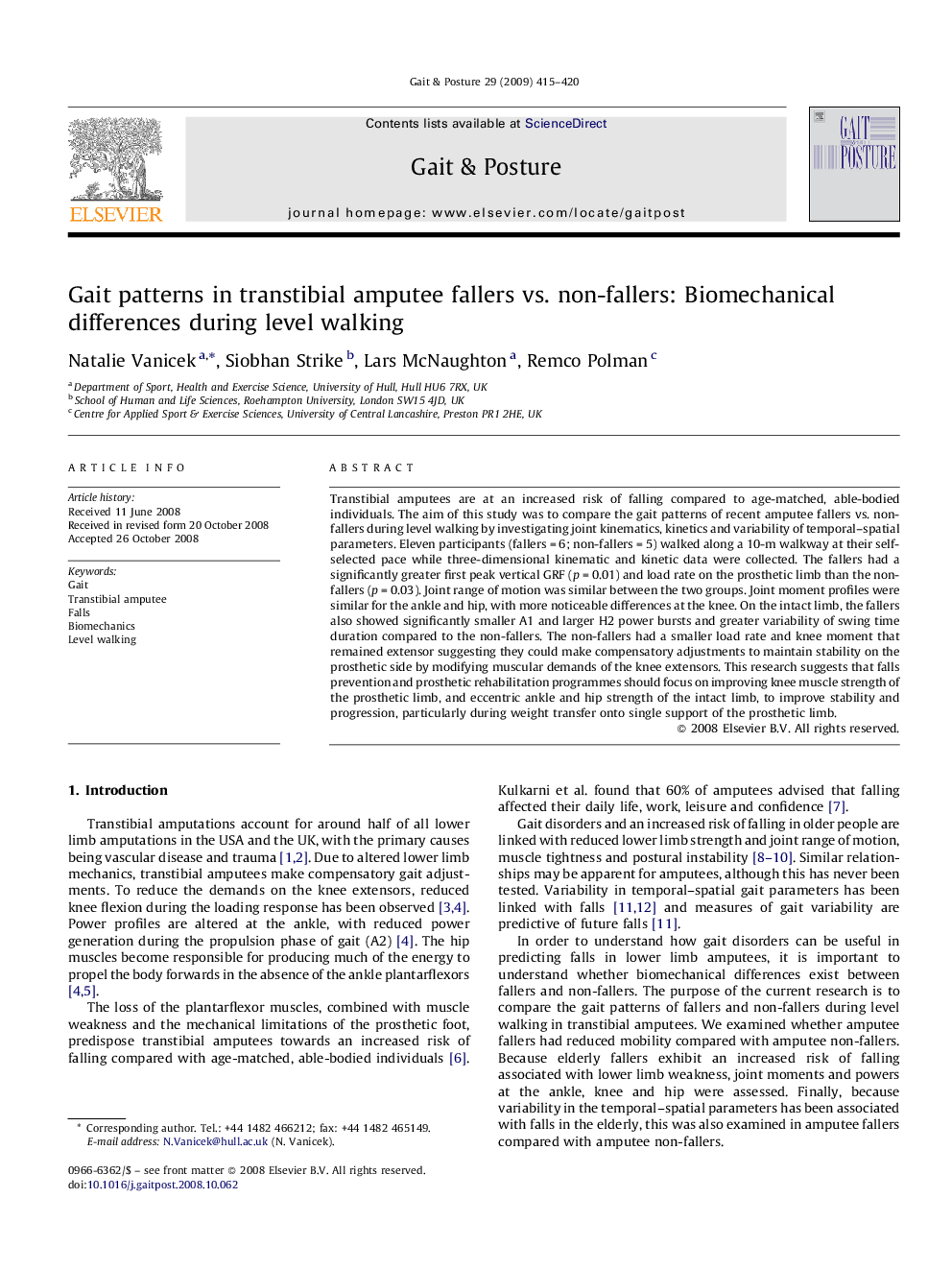| Article ID | Journal | Published Year | Pages | File Type |
|---|---|---|---|---|
| 4057691 | Gait & Posture | 2009 | 6 Pages |
Transtibial amputees are at an increased risk of falling compared to age-matched, able-bodied individuals. The aim of this study was to compare the gait patterns of recent amputee fallers vs. non-fallers during level walking by investigating joint kinematics, kinetics and variability of temporal–spatial parameters. Eleven participants (fallers = 6; non-fallers = 5) walked along a 10-m walkway at their self-selected pace while three-dimensional kinematic and kinetic data were collected. The fallers had a significantly greater first peak vertical GRF (p = 0.01) and load rate on the prosthetic limb than the non-fallers (p = 0.03). Joint range of motion was similar between the two groups. Joint moment profiles were similar for the ankle and hip, with more noticeable differences at the knee. On the intact limb, the fallers also showed significantly smaller A1 and larger H2 power bursts and greater variability of swing time duration compared to the non-fallers. The non-fallers had a smaller load rate and knee moment that remained extensor suggesting they could make compensatory adjustments to maintain stability on the prosthetic side by modifying muscular demands of the knee extensors. This research suggests that falls prevention and prosthetic rehabilitation programmes should focus on improving knee muscle strength of the prosthetic limb, and eccentric ankle and hip strength of the intact limb, to improve stability and progression, particularly during weight transfer onto single support of the prosthetic limb.
